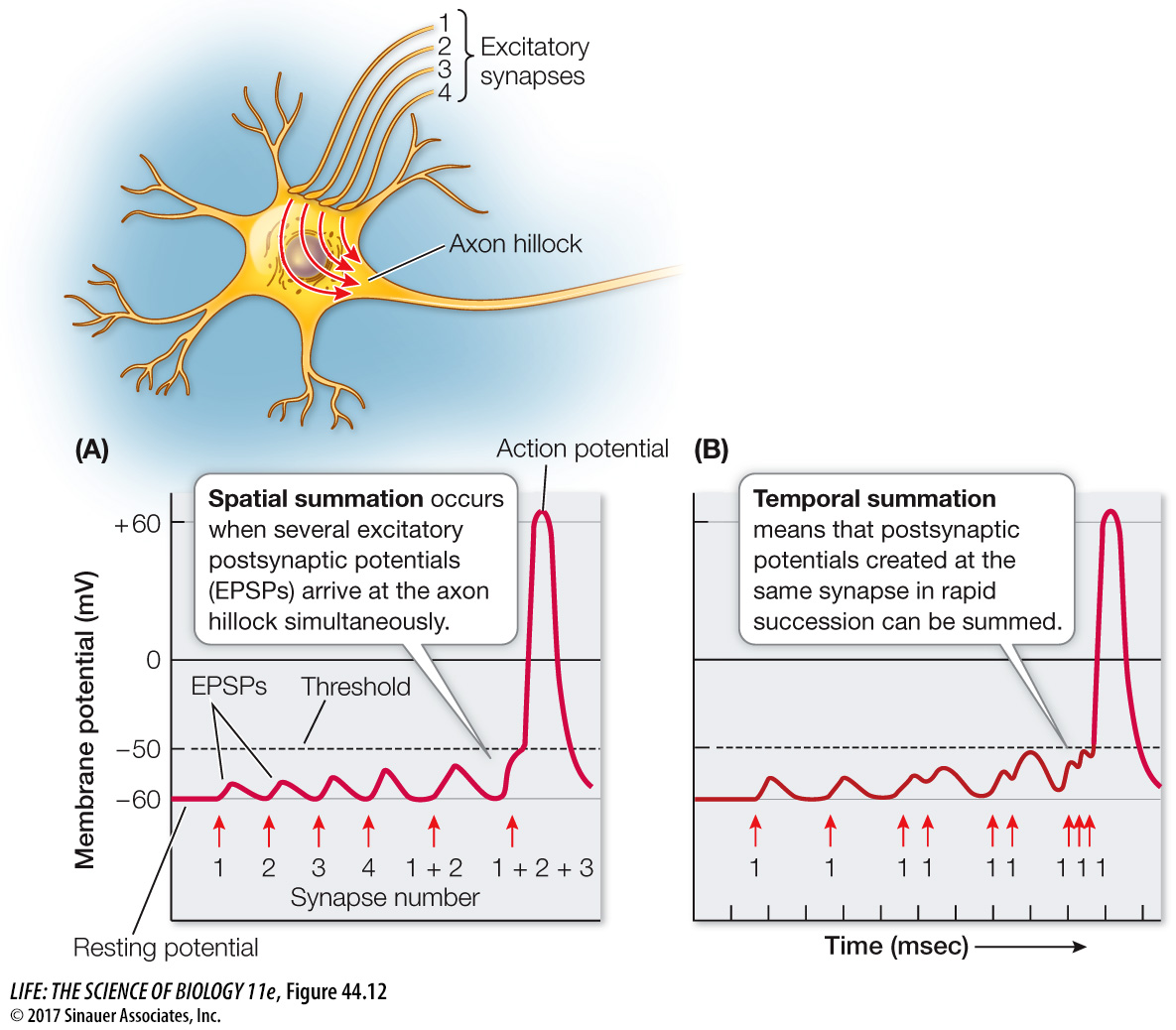The postsynaptic neuron sums excitatory and inhibitory input
What determines when an individual neuron will fire an AP? As you just learned, the sum of excitatory and inhibitory postsynaptic potentials creates a graded membrane potential in the postsynaptic cell body. This summation ability is the major mechanism by which the nervous system integrates information. A neuron may receive 1,000 or more synaptic inputs, but it has only one output: APs in a single axon. At any one time, the information from all of the active inputs is translated into the rate at which that neuron generates APs in its axon.
For most neurons, summation takes place in the axon hillock at the base of the axon. The cell membrane of the axon hillock is not insulated by glia and has many voltage-
Excitatory and inhibitory postsynaptic potentials are summed over space and over time. Spatial summation adds up the simultaneous influences of synapses at different sites on the postsynaptic cell (Figure 44.12A). Temporal summation adds up postsynaptic potentials generated at the same site in a rapid sequence (Figure 44.12B).
